As an Amazon Associate I earn from qualifying purchases.

If there is a more misunderstood garden weed than purslane, I don’t know what it is.
Loved in some cultures, reviled in others, this prolific, tasty, easy-to-grow succulent really ought to be welcomed in your yard, not sprayed with Roundup. Read on and I will give you some ideas on what to do with purslane, and how to grow and harvest it.
Let’s start by explaining what is purslane? Primarily we are talking about Portulaca oleracea, a low-growing, succulent annual native to… well, that is not entirely clear. Purslane grows all over the world, and there is ample evidence that native groups here in America were enjoying it long before Columbus showed up.
There are a number of purslane cousins, all in the portulaca genus.
Purslane grows in every state of both the United States and Mexico, as well as every Canadian province that borders the US. Across the rest of the world, it generally likes warmer places, but a cultivated variety that has gone native in my yard is from seed from Germany, of all places.

Basically every culture that has a system of writing has been writing about eating this common weed as long as they’ve had writing. And those cultures with no written language have passed on the knowledge for millennia. Most every native group had a use for purslane, either as a green thing in the pot, a salad herb or as medicine.
Pliny the Elder, whom most people know of more as a beer than as a 2000-year-old Roman philosopher, wrote highly of purslane, as did the Greek Theophrastus, a protege of Aristotle.
So how did this common edible plant, much like it’s friend lambsquarters, become so hated in modern America?
Probably because a) many people forgot that it tasted better than most of the other vegetables alongside it, and b) purslane can indeed take over a garden. The plant sets seeds fairly quickly (they’re edible, by the way), and they remain viable for up to 40 years. Yeah, you read that right.
New plants take only about a week to pop up from seed in the summer, and this is a good time to reiterate that purslane is a warm weather vegetable. It hates the cold, even the cool weather we get here in Sacramento during winter.
It is a fantastic companion plant in your garden, by the way, because it basically becomes a living mulch, keeping soil moist between waterings. And in our Sacramento summers, we can have three rounds of it growing each gardening season.
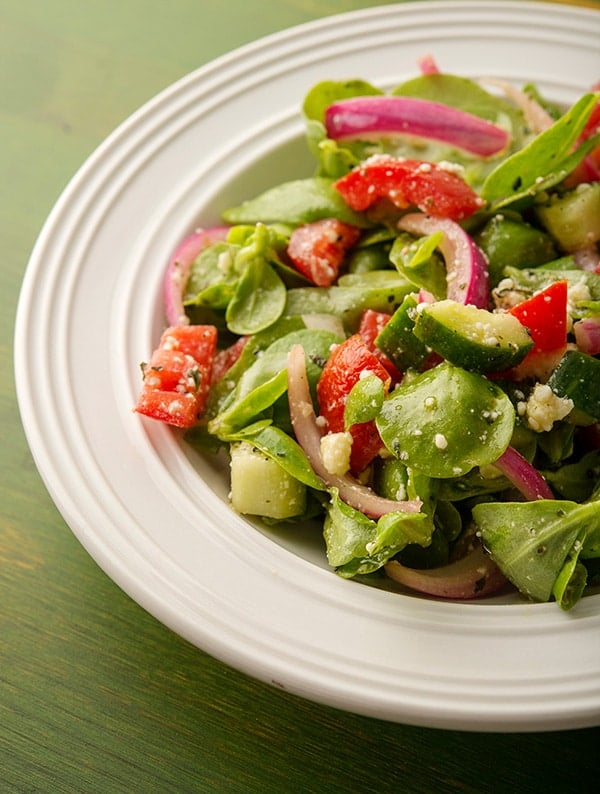
Eating purslane is pretty much a matter of picking it and tossing it in a bowl, ideally with some salad fixin’s. You can certainly cook it, and there are many great Mexican recipes for verdolagas, usually with pork and salsa verde.
What does purslane taste like? It’s crunchy, juicy — haters say slimy, but it is absolutely nothing like okra or nopales — and tart. The plant does contain a little oxalic acid in it, same as sorrel and rhubarb. So along those lines, if you have kidney stones, you might want to skip eating purslane.
If you do cook purslane, don’t do it for long. You want them to hold their texture, so only 5 minutes or so.
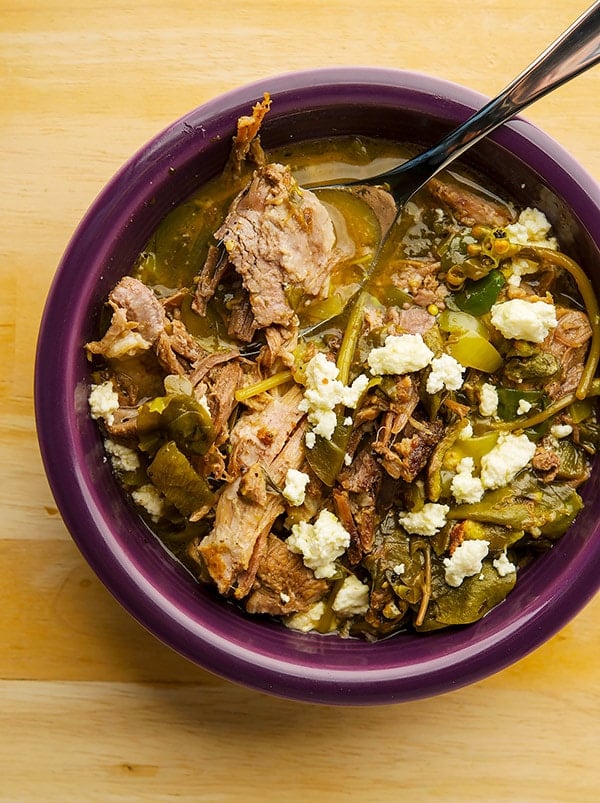
The weed does seem to be having a moment these days, however. I have seen it sold in farmer’s markets for insane prices — $7 a pound?!?! And you can actually buy purslane supplements, mostly as a source of plant-based omega-3 fatty acids.
It is true that purslane is very good for you. A typical serving has 20 calories, a little protein, and lots of vitamins: It’s incredibly rich in Vitamin E and will add on about 25 percent of your daily Vitamin C needs. It also contains significant amounts of iron, magnesium, manganese and potassium.
This 2014 study basically lays out purslane as a superfood.
Interesting side note: The plant appears to be toxic to cats, although our outdoor cat has never so much as noticed it, let alone eaten any.
As I mentioned, I mostly eat purslane in crunchy salad; my recipe is below. But I also love eating it pickled as a topping for tacos or along with charcuterie.
Purslane Salad
Ingredients
- 1/4 cup red wine vinegar
- Salt
- 1 red onion, sliced thin
- 1 cucumber, diced
- 4 plum tomatoes, diced
- 1/2 to 1 pound purslane, leaves and tender stems
- 3 tablespoons olive oil
- 1 teaspoon dried oregano
- 1/4 cup feta cheese, crumbled
Instructions
- Mix the red onion with the vinegar and a hefty pinch of salt in a large bowl. Let this sit for 15 minutes while you cut the other ingredients.
- Add the remaining ingredients to the bowl and toss to combine.
Nutrition
Nutrition information is automatically calculated, so should only be used as an approximation.


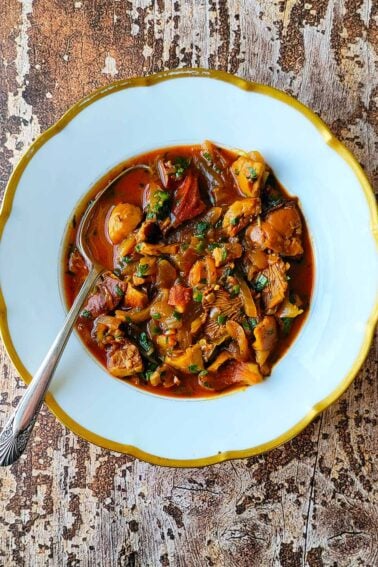

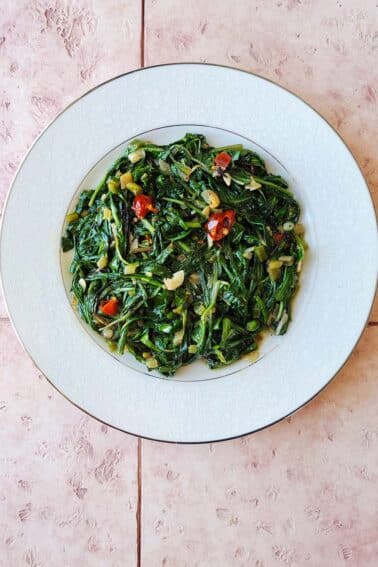
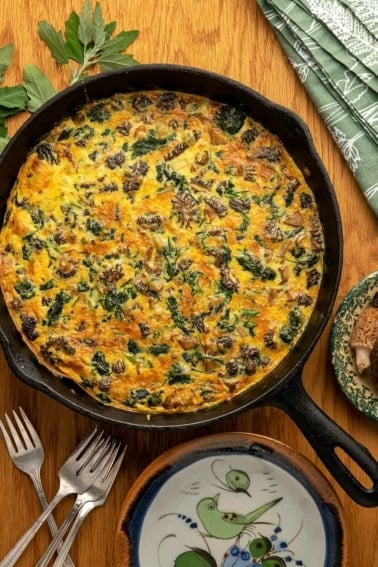
Hank, thanks for this recipe, which I have enjoyed many times. But there is something else to know about purslane, as I just recently learnt to my detriment: deer and/or rabbits will eat it down to the soil level! I have grown it here before and never had a problem, but then a week ago I found that mine had disappeared overnight. Browsed 100% clean to the ground. We will see if it resprouts from the roots and doesn’t get browsed yet again. I couldn’t say for certain who was the culprit, but I highly suspect the deer. They have also at the same time browsed my newly-planted sweet potato vines to the ground.
Excelente explicación. Gracias por compartir sus conocimientos con nosotros. ? Debemos aprovechar lo que nos regala la naturaleza ?
Hank I’ve been told that the ones with a red dot on them are posinious can u tell me if so because our drive is always covered in red dotted ones
Perry: Just make sure it’s not spurge. They kinda sorta look alike.
The way to tell spurge (Euphorbia species) from similar looking herbs such as chickweed and purslane is by the juice. All the spurges have a milky white juice, whereas chickweed and purslane have a clear to greenish juice. While there are edible plants such as sowthistle and dandelion that also have a white milky latex, those plants are a very different shape. Small plants with rounded leaves and milky juice are usually some kind of spurge. Don’t eat them, they will blister your mouth and are poisonous.